Artist residencies
A sixteen women’s pajama party
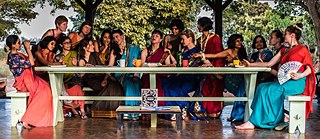
For ten days in February 2016, sixteen artist- storytellers shared ideas and space at a dancer’s residency, Nrityagram, on the outskirts of Bengaluru to talk about how they, as women, see the role of role models in their cities and their worlds. Apart from an exciting and broadening exchange between two cultures across borders, the result of this residency is this year’s edition of Spring Magazine - a compilation of graphic stories conceived at the residency and developed in the months that followed. The edition #13 Elephant in the Room will be out this May (2016) at the Comic Salon in Erlangen.
Organised by the Goethe-Institut / Max Mueller Bhavan New Delhi, this was a residential workshop with a structure – not a schedule. It was pretty much run by the sixteen participants themselves.
How did that work? Most of them were meeting each other for the first time. They needed time to get to know each other and come up with an idea of how to go about creating a story board for a magazine in less than ten days. They started off every day with a playful drawing exercise which served as an ice breaker between the groups. Artists organically volunteered themselves to lead the exercise. From fantasising a weird character and drawing their own version of it to drawing out a word as basic as “happy”, they worked with various warm-up ideas that set them in mood for an inspiring day.
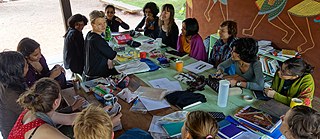
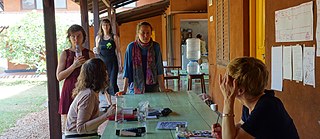
For comparatively young Indian artists such as Reshu Singh and Kaveri Gopalakrishnan, seeing how other artists brainstorm and see their processes helped them to ruminate on their own process and further their stories. While Reshu in her autobiographical piece explores how role models change over time, Kaveri’s story talks about a girl who is in love with her body hair.
On being asked about what the residency meant to her, Larissa Bertonasco enthusiastically said: “This is a very special intimate space where individual talented women have gathered under one roof. For me the entire place is filled with a special energy and we the women of today have developed a language of our own, to communicate with each other.” Larissa’s autobiographical piece reflects upon lives of many people who accompanied her through various phases of life.
After the brainstorming sessions that took place in the first half of the day, everyone broke for lunch prepared by the young dancers who were themselves doing residencies at Nrityagram. From observing beautiful mudras of resident dancers to enjoying appetising South Indian lunches, Nrityagram itself had a lot of inspiration to offer. They happily let these moments motivate them and reflect in their work.
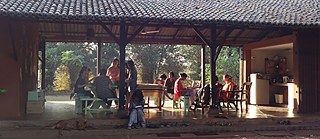
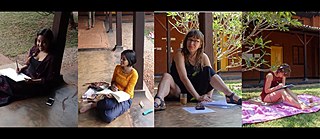
Within this 10-day period, which seemed like perfect number of days for the participants, they managed to ideate their stories and make a rough story board. What followed after the residency was only the fine tuning of the sketches. The harmony among the participants was constructive and many of them plan to take these contacts further and initiate future projects by themselves.
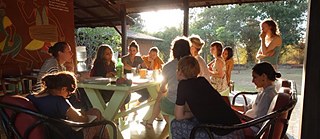
For curious readers like me who want a copy of the collection as soon as possible, #13 Elephant in the Room the next Spring Edition will be launched in May at the Comic Salon Festival in Erlangen. Along with the Spring illustrators, the Indian artists will be represented by Prabha Mallya, Archana Sreenivasan and Priya Kuriyan who will be showcasing their work at the collective stand of Spring and Goethe-Institut / Max Mueller Bhavan, New Delhi.